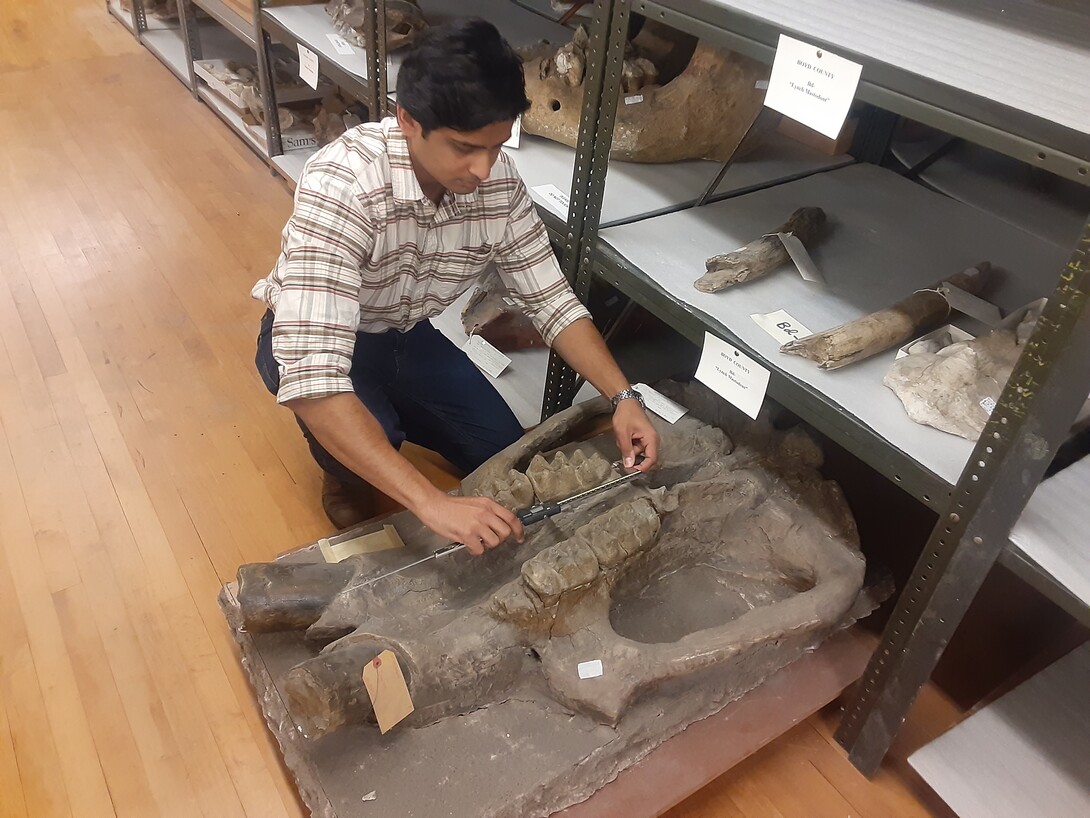
The University of Nebraska–Lincoln may provide key puzzle pieces for an ongoing project at the Smithsonian Institution’s National Museum of Natural History.
Advait Jukar, a researcher with the Smithsonian, recently stopped by Morrill Hall’s fossil collection to assess the university’s more than 1,000 elephant and mammoth teeth.
The teeth will be compared to a mysterious elephant skull at the National Museum of Natural History, which was found in Hagerman, Idaho and is the only known skull of its kind. By examining Nebraska’s collection, Jukar hopes to better understand the species and family tree of the ancient animal.
“It’s morphologically really interesting. It’s not typical of what we’d expect of the American mastodon, but it’s also not what we’d expect of these other primitive mastodons that we’ve found in North America,” Jukar said. “So, what is this thing and where did it come from?”
To get a comprehensive look at the elephant’s possible origins, Jukar is traveling to different museums, including Morrill Hall. Nebraska’s ancient history, he said, made it perfect for the project.
“UNL has one of the best fossil elephant collections on the planet,” Jukar said. “If you go back 12,000 years, you would have seen Archie the mammoth or equivalents wandering around the Nebraska Prairie with herds of bison, elk, horses, camels, all kinds of things like that.”
The research requires a large volume of fossil samples, and the university’s diverse collection aligned with that goal.
“In order to get robust statistical results, we need a lot of samples. It’s always good to have one thing, but that just becomes an anecdote. When you have more things you can say, ‘Oh this is a repeated pattern.’ It is a way for us to get at the truth,” he said.
While the skull’s background remains elusive, Jukar is excited about the project’s possible findings.
“In the larger picture, I think people want to know where we come from and why the world is the way it is, and really the only way to figure this out is by going back in time. I get to travel back in time with these animals and understand why Nebraska was the way it was 15 million years ago and why it looks the way it is now.”







